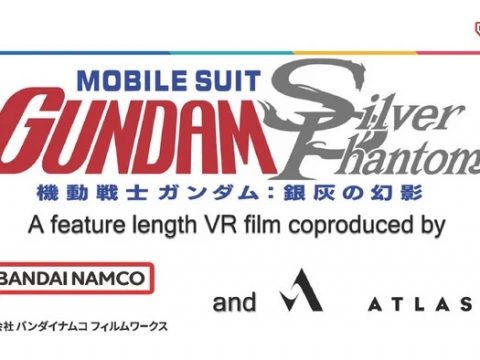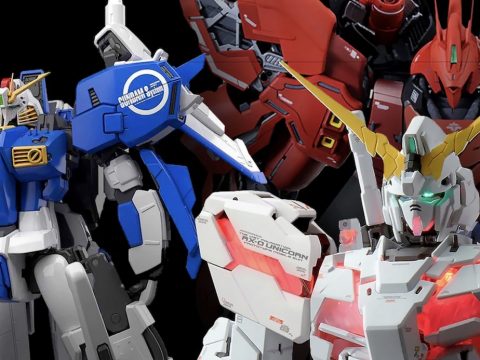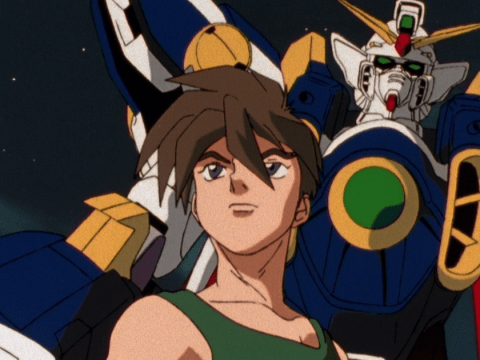
My heart goes out to all videogame-loving Gundam fans, constantly strung along with false promises and solidly mediocre games. Now, don’t get me wrong, it’s not that Gundam videogames are inherently bad – the sheer number released has guaranteed that at least some are pretty good – but none manage to really capture the epic nature of Gundam and truly do justice to one of my favorite sci-fi series. The disappointment (for me) started way back with the original Playstation, as I was the schmucky kid who willingly plopped down way too much money on too many imported games, continually hoping that each new one would deliver where previous ones hadn’t. Over the years with new systems and new games the graphics kept improving but the disappointment has remained.
So where am I going with all this? Well, a few years ago I finally found the game I’d wanted, and it’s called Gundam: Senjou no Kizuna (Bonds of the Battlefield). On a recent trip back to Japan I had the chance to reacquaint myself with it, and I’m still convinced it’s the best.
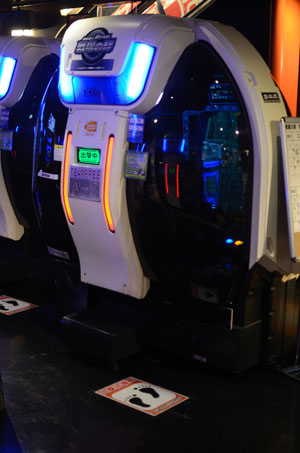 Clocking in at almost five years old, Senjou no Kizuna is no spring chicken, but it still manages to impress thanks to the impressive bit of kit used to play the thing: instead of a traditional sit-down arcade machine, players enter a “P.O.D.” cockpit, where the game screen is projected across the inside of a dome and the game itself is controlled with two joysticks and foot pedals. It effectively replicates the experience of piloting a Mobile Suit (although not quite to the excessive degree of Capcom’s classic Xbox mecha simulator, Steel Battalion) and if you’re curious about that silly acronym, it stands for “Panoramic Optical Display.”
Clocking in at almost five years old, Senjou no Kizuna is no spring chicken, but it still manages to impress thanks to the impressive bit of kit used to play the thing: instead of a traditional sit-down arcade machine, players enter a “P.O.D.” cockpit, where the game screen is projected across the inside of a dome and the game itself is controlled with two joysticks and foot pedals. It effectively replicates the experience of piloting a Mobile Suit (although not quite to the excessive degree of Capcom’s classic Xbox mecha simulator, Steel Battalion) and if you’re curious about that silly acronym, it stands for “Panoramic Optical Display.”
The substantial hardware was no doubt a daunting purchase for arcade operators years ago, and while they may not be as ubiquitous as they once were, most large arcades in Tokyo still have a set in use. To this day, the game receives regular updates and the occasional special event, ensuring the players keep coming back and arcades keep making their money. This continued success is also the likely reason the only home version to see release was a Playstation Portable port, although it should be emphasized just how underwhelming it is to play this game on a tiny PSP screen.
The game itself would be perfect for a home system like the Playstation 3 or Xbox 360, thanks to its online gameplay and first-person shooter influences. The game is a deathmatch-focused competitive shooter, where teams of four to eight Mobile Suits do battle. Each team (Federation versus Zeon) has what is basically a shared health bar, whenever you die points are subtracted from the team pool. When a team’s points are reduced to zero, they lose. This system effectively balances the discrepancies between Mobile Suits, as a Zaku II will be less powerful than a Kampfer, but when a Zaku II gets destroyed it won’t hurt the team’s points pool quite as much. Thanks to constant updates and additions over the years, the amount of Mobile Suits available is staggering, with a lineup populated with all sorts of obscure One Year War era Mobile Suits, plus all the well-known ones from series like the original Gundam, MSV and 08th MS Team. Of course, unlocking the best ones will require a lot of game time and a lot of money.
When starting off, you use one of the Pilot Terminals (stand alone machines with touch screens and a large computer monitor for displaying match replays) to create a new pilot, selecting either Federation or Zeon. The Pilot Terminals are also used to upgrade your Mobile Suits (with points earned in the game), view your stats, change your nickname and tweak your character settings. All of this is saved to a memory card, which can store one character from each side.
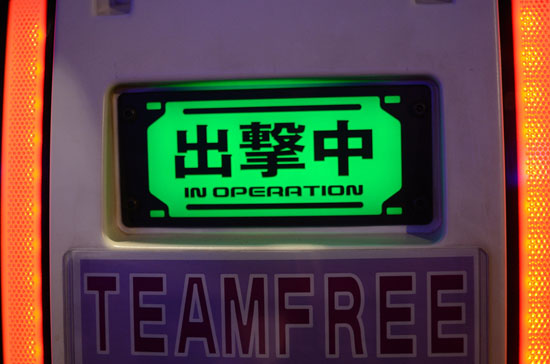
Recent updates have changed how the game begins for new players, as earlier versions forced you to do just a few training missions before jumping into online combat. Now you’re forced to do training missions, then online missions with people against computer-controlled enemies, and only after that are you allowed to delve in to actual player-vs-player combat. This new setup is a bit annoying, as the game still isn’t cheap (usually 300 yen for two games, whereas a few years ago it was 500 yen) and being forced to fight unintelligent computer foes isn’t much fun once you’ve got a feel for the game.
The controls are more immersive than your typical arcade stick and button set ups, but they’ll feel familiar if you’ve ever played a first person shooter. One joystick controls movement, one controls where you’re looking, pedals control dashing and jumping, while buttons and triggers on the joysticks operate your weapons.
The result is a game that feels suitably epic when you’re engaged in combat against other players online. The variety of Mobile Suits offers a range of strategies for play, from close combat specialists to long range artillery support. Customization allow you to further tweak these specialties by focusing on maneuverability or defensive strength, and each Mobile Suit has a variety of unlockable primary and secondary weapons. When trying to outsmart a superior opponent, slamming on the controls and having to turn your head just to take in the full view screen, it really feels like you’re a Mobile Suit pilot, and that’s just something other Gundam games haven’t been able to totally achieve.
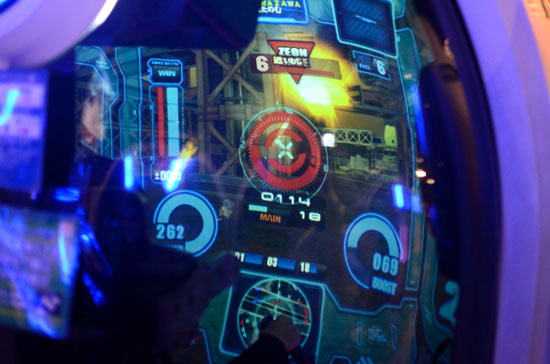
Thanks to the arcade nature of the game, Senjou no Kizuna effectively removes the most tedious parts of other Gundam games and focuses on what counts most in a game featuring giant robots: the combat. Not quite as arcadey as Virtual On but devoid of the pretensions of a serious simulator, Senjou no Kizuna strikes the perfect balance. There’s depth and timing and balance to delve in to, but none of it is so complicated you can’t just jump in and have fun.
Japanese arcade developers have bizarrely been more willing to adapt to online gameplay than their home console counterparts, with nearly all modern arcade fighting games utilizing online matchmaking. The result is that you’re always able to play against an actual opponent, even if your arcade is empty. Senjou no Kizuna embraced this mentality more readily than other games, with some clear influences from Western first person shooters. For instance, the game supports using a mic, allowing you to effectively communicate with your teammates. Admittedly, most Japanese players seem to prefer to use pre-written messages to communicate, but the fact that the game has microphone support is a nice touch.
Unlike console Gundam games that typically try doing too much with too little (Project Pegasus, anyone?) or other arcade games like the Vs. series that tried to shoehorn Gundam in to the fighting genre, Senjou no Kizuna feels like it was built from the ground up to be the best, most satisfying Gundam game it could be. While being relegated to Japanese arcades and the burden of aging graphics keeps it from being perfect, for my money, Senjou no Kizuna is as good as it gets.
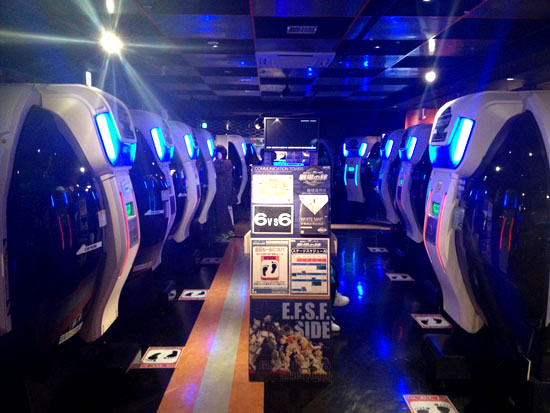
Related Stories:
– Gundam Reconguista in G Impressions
– Life-size walking Gundam planned
– Mobile Suit Gundam: Side Stories Review
– Reebok Announces Gundam Sneakers
– First Gundam The Origin Anime Promo Released


